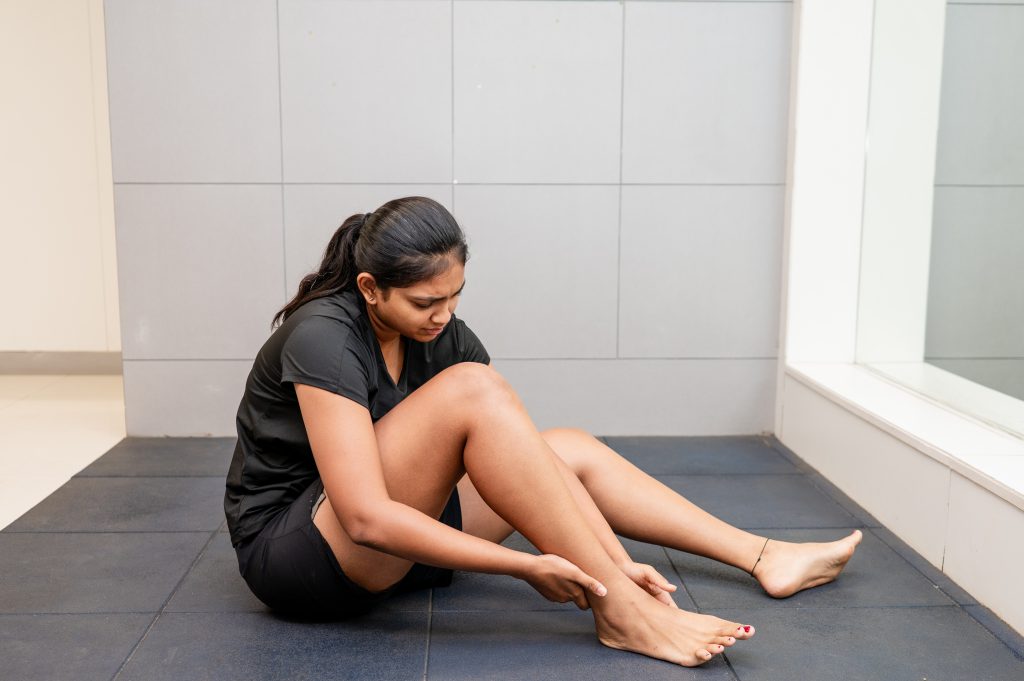When we talk about sports performance, most people think about muscle strength, endurance, or skill. But one of the most overlooked parts of your body is your feet. Whether you play football, cricket, tennis, or run marathons, your feet are your foundation. Almost every movement in sports begins with your feet—standing, running, pushing, or jumping.
Unfortunately, foot injuries are common among athletes, and if not treated properly, they can affect your entire sports career. They don’t just cause pain; they can lead to long breaks from training, repeated injuries, and even early retirement from sports.
So, can a foot injury really impact your sports lifetime? The answer is yes. Let’s dive deeper into why that happens, and more importantly, how to prevent it.
Why Are Feet So Important in Sports?
The human foot is a complex structure of 26 bones, 33 joints, and more than 100 muscles, ligaments, and tendons. Your feet are responsible for:
- Shock absorption when you land after a jump
- Balance and posture
- Pushing off when you run or sprint
- Changing direction quickly during fast sports movements
A small problem in this system can throw off the balance of your entire body. Foot problems don’t stay limited to the foot — they can lead to pain in the ankles, knees, hips, or even lower back.
For athletes, strong and healthy feet are non-negotiable if you want to perform at your best and maintain a long sporting career.
Common Foot Injuries in Athletes
Here are some of the most common foot injuries we see in sports:
1️⃣ Plantar Fasciitis
This is the inflammation of the thick band of tissue under the foot (called the plantar fascia). It causes stabbing pain in the heel, especially with your first steps in the morning.
2️⃣ Stress Fractures
Stress fractures are tiny cracks in the bones of the foot. They often happen due to overtraining, poor footwear, or suddenly increasing activity levels.
3️⃣ Achilles Tendonitis
The Achilles tendon is the large tendon at the back of your ankle. Inflammation or degeneration here causes pain during running or jumping.
4️⃣ Ankle Sprains
Though technically related to the ankle, sprains can destabilize your entire foot. An untreated ankle sprain can make you prone to repeated injuries.
5️⃣ Turf Toe
A sprain of the big toe, commonly seen in sports that require sudden bursts of speed like football, basketball, and athletics.
6️⃣ Sesamoiditis
Inflammation of the small bones (sesamoids) under the big toe joint. It’s common in sports like dancing, running, or tennis.
How Can Foot Injuries Affect Your Sports Lifetime?

Many athletes think foot injuries are minor and continue training despite the pain. That’s a big mistake. Ignoring foot injuries can have serious long-term consequences:
⚠️ 1. Compensation Injuries
When your foot hurts, you may start walking or running differently to avoid pain. Over time, this compensation can strain other joints like your knees, hips, or lower back, leading to new injuries.
⚠️ 2. Recurring Injuries
If a foot injury isn’t given time and proper rehab to heal, you’ll likely keep injuring the same area again and again. This cycle reduces your training time and affects performance.
⚠️ 3. Reduced Confidence
Athletes with repeated foot injuries often develop a fear of movement or re-injury. This mental barrier can hold you back in competition.
⚠️ 4. Permanent Damage
If ignored for too long, foot injuries can result in permanent changes like arthritis, chronic pain, deformities, or poor mobility, severely shortening your sports career.
⚠️ 5. Early Retirement from Sports
For professional athletes, serious or recurring foot injuries can sometimes force early retirement, especially in sports that require a lot of running or jumping.
Why Physiotherapy Matters for Foot Injuries
The good news is that with proper physiotherapy, most foot injuries can be managed effectively. Physiotherapists specialize in helping athletes recover fully, prevent future injuries, and return to sport safely.
Here’s how physiotherapy can help:
✅ 1. Accurate Diagnosis
Foot pain doesn’t always come from the place where it hurts. Through assessments like gait analysis, posture checks, and muscle testing, physiotherapists find the root cause of your problem.
✅ 2. Pain Relief Techniques
Depending on your condition, your physiotherapist may use:
- Manual therapy
- Dry needling
- Soft tissue release
- Taping
- Ultrasound or LASER therapy
✅ 3. Strengthening and Mobility Work
Physiotherapy focuses on making sure the muscles of your feet, ankles, calves, and hips are strong and flexible enough to support sports activity.
Check out a few exercises for Flat foot here.
✅ 4. Sports-Specific Rehab
Your rehab isn’t just about healing the injury—it’s about preparing your body to handle the specific demands of your sport.

✅ 5. Guidance on Footwear and Orthotics
Sometimes, the right shoe choice or custom orthotics (shoe inserts) can prevent further damage and improve your performance.
Here is a small guide from our Instagram to picking the correct shoes: https://www.instagram.com/p/DLB80HZM3Ik/?igsh=MXN3YXpqNnd2ODRsYw==
Prevention Tips for Athletes
If you’re serious about sports, don’t wait for a problem to start before taking care of your feet. Here are some simple tips:
- Do not ignore any pain—mild discomfort today could become a major issue tomorrow.
- Warm up your feet and ankles before every training session.
- Include foot strengthening exercises like towel scrunches, toe curls, and calf raises in your routine.
- Invest in proper sports shoes designed for your sport and foot type.
- Avoid overtraining—listen to your body.
- See a physiotherapist regularly, not just when you’re in pain.
Real Case Example: How Early Treatment Saved an Athlete’s Career
A young basketball player at our clinic came in with persistent ankle pain, which kept recurring due to chronic ankle instability. She had been ignoring it for months. By the time she came to us, her posture was already affected, causing knee discomfort too. On detailed assessment we discovered reduced proprioceptive activity, which was contributing to repetitive ankle sprains.
Through a combination of manual therapy, strengthening exercises, orthotic advice, and gradual return to training, we helped her recover fully. Today, she plays at a higher level without pain, because she acted early.
Click here to see her experience with us
Conclusion
A foot injury doesn’t just hurt your foot—it can hurt your entire sports career. But with early diagnosis, expert physiotherapy, and dedicated rehab, you can recover stronger than before and prevent future problems.
Don’t let a foot injury decide your sports future.
➡️ Need help with a foot injury? Book an assessment with our physiotherapy experts today. Let’s work together to keep you doing what you love—pain-free and powerful.
Read more about foot injury rehab here: https://pmc.ncbi.nlm.nih.gov/articles/PMC2786815/

